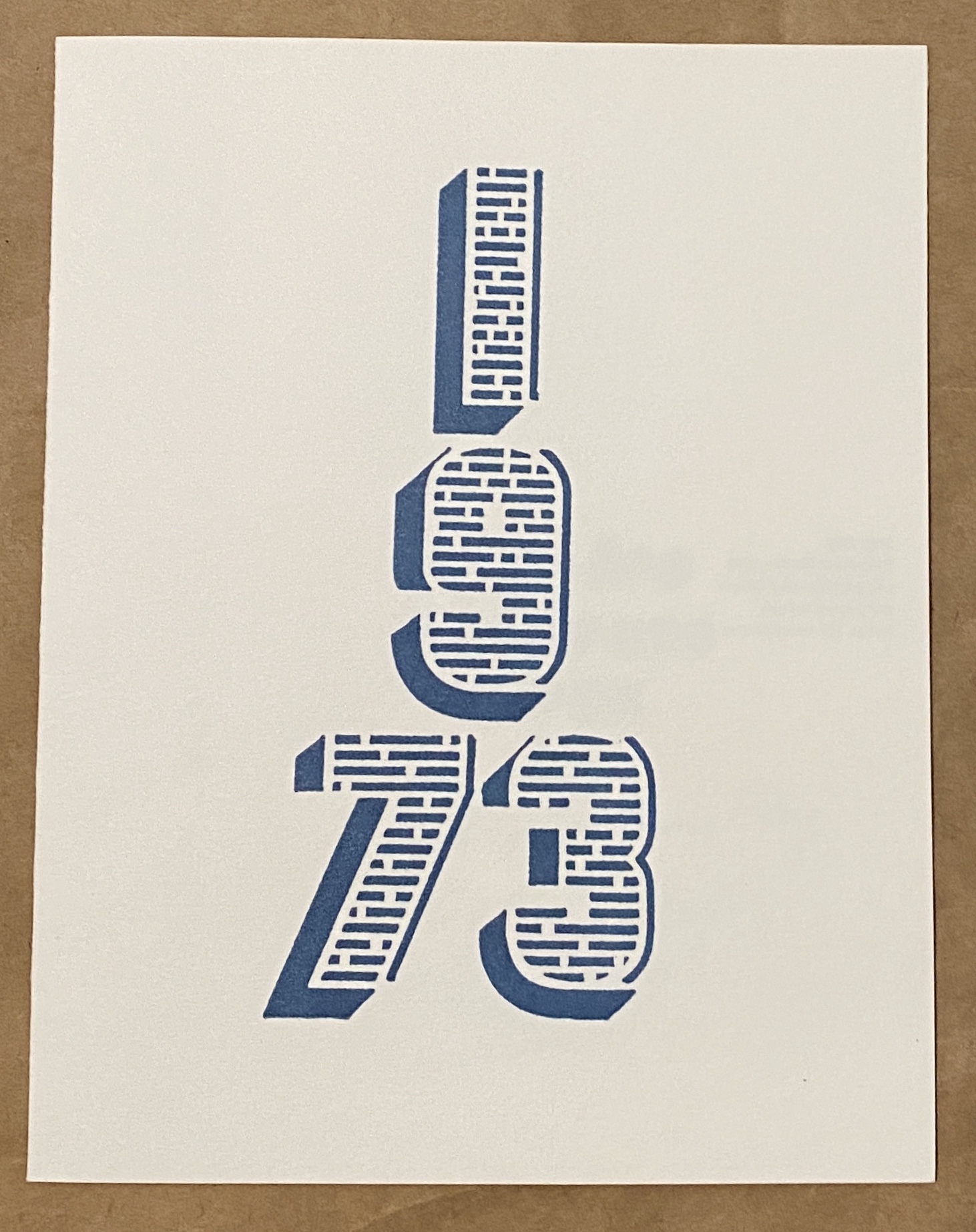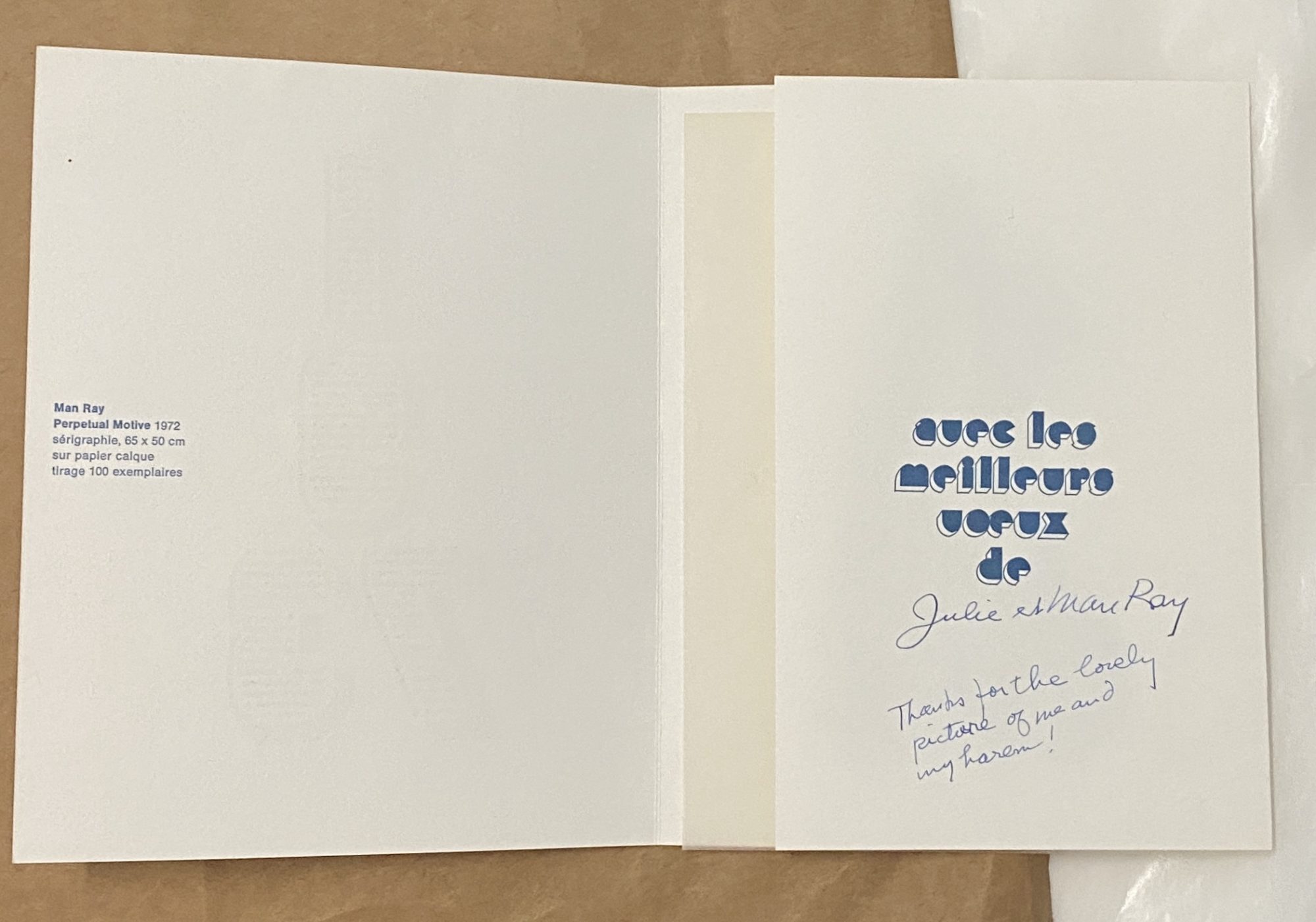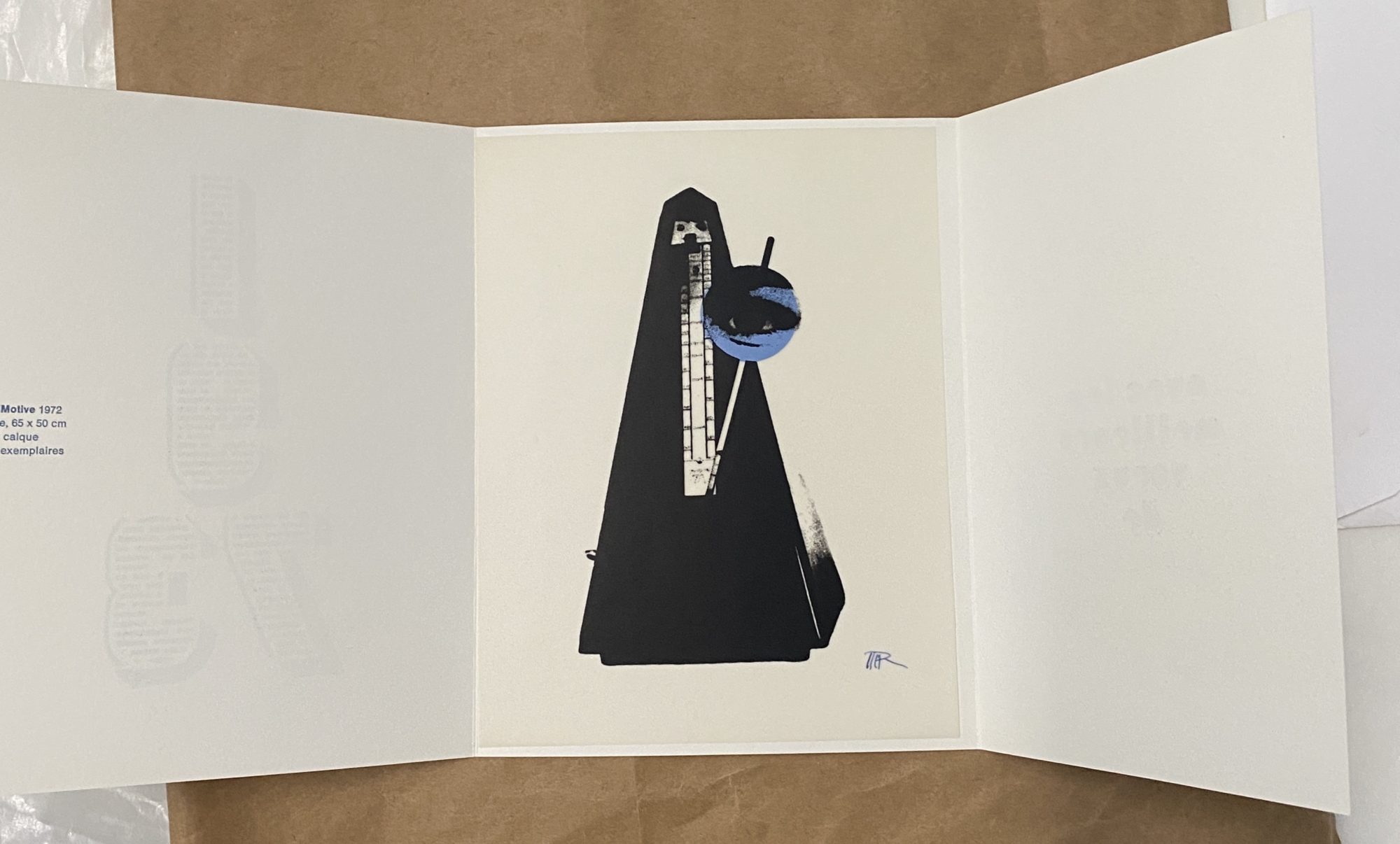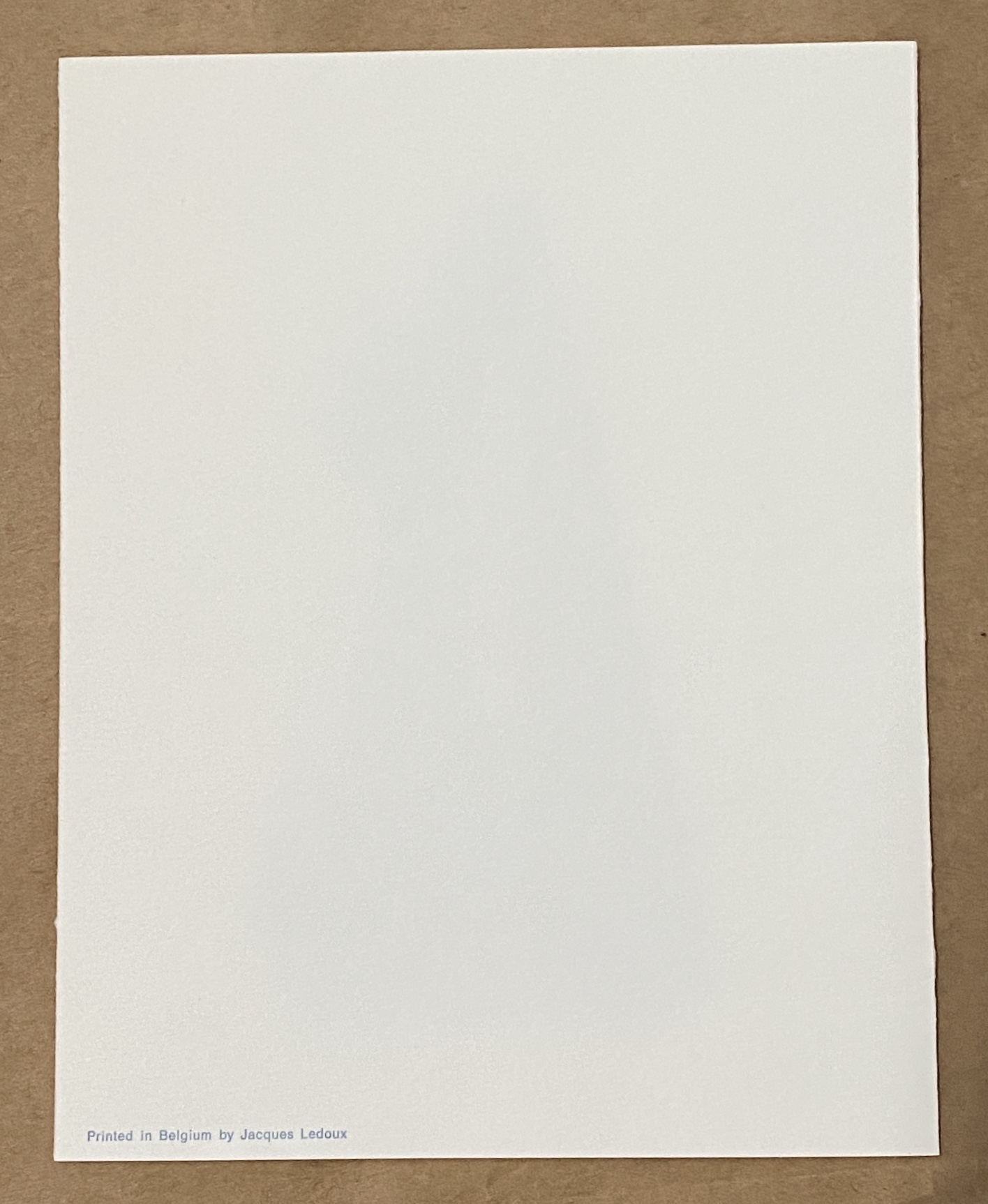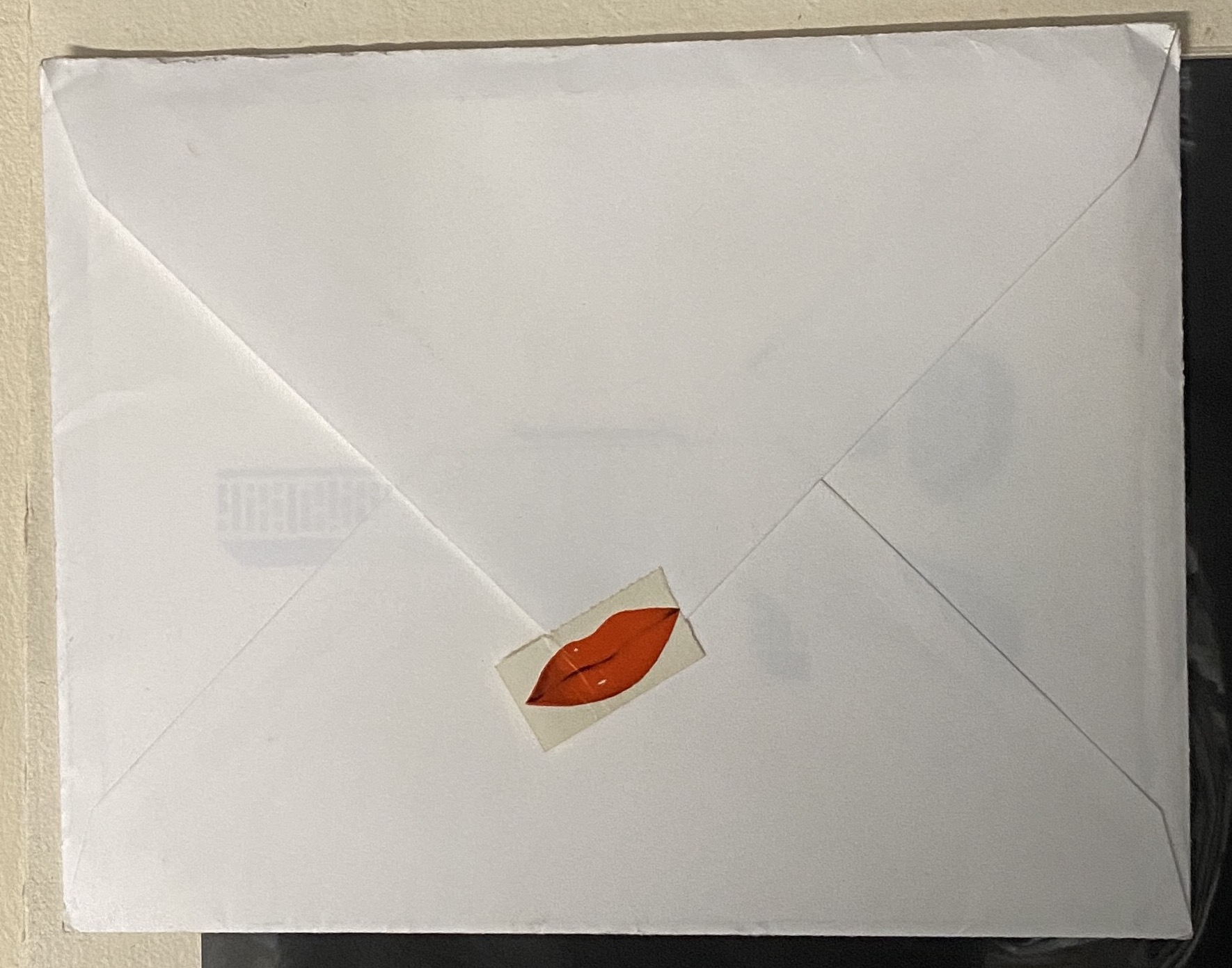Man Ray – Perpetual Motive
Man Ray, Perpetual Motive is an original Serigraph on Tracing Paper made in 1972. It is initialed by Man Ray in the lower right. Made in an edition of 100 which the artist mailed to his close friends. This print comes with the original letter and envelope. Printed in Belgium by Jacques Ledoux.
In 1922, six months after he arrived in Paris from New York, Man Ray made his first rayographs. To make them, he placed objects, materials, and sometimes parts of his own or a model’s body onto a sheet of photosensitized paper and exposed them to light, creating negative images. This process was not new—camera-less photographic images had been produced since the 1830s—and his experimentation with it roughly coincided with similar trials by Lázló Moholy-Nagy. But in his photograms, Man Ray embraced the possibilities for irrational combinations and chance arrangements of objects, emphasizing the abstractionof images made in this way. He published a selection of these rayographs—including one centered around a comb, another containing a spiral of cut paper, and a third with an architect’s French curve template on its side—in a portfolio titled Champs délicieux in December 1922, with an introduction written by the Dada leader Tristan Tzara. In 1923, with his film Le Retour à la raison (Return to Reason), he extended the rayograph technique to moving images.
Around the same time, Man Ray’s experiments with photography carried him to the center of the emergent Surrealist movement in Paris. Led by André Breton, Surrealism sought to reveal the uncanny coursing beneath familiar appearances in daily life. Man Ray proved well suited to this in works like Anatomies, in which, through framing and angled light, he transformed a woman’s neck into an unfamiliar, phallic form. He contributed photographs to the three major Surrealist journals throughout the 1920s and 1930s, and also constructed Surrealist objects like Gift, in which he altered a domestic tool (an iron) into an instrument of potential violence, and Indestructible Object (or Object to Be Destroyed), a metronome with a photograph of an eye affixed to its swinging arm, which was destroyed and remade several times.
| Title | Perpetual Motive |
|---|---|
| Medium | Serigraph |
| Year | 1972 |
| Edition | 100 |
| Signature | Initialed |
| Size | 7.5 x 5.75 (in) 19 x 15 (cm) |
| Price | SOLD |
Description
Man Ray, Perpetual Motive is an original Serigraph on Tracing Paper made in 1972. It is initialed by Man Ray in the lower right. Made in an edition of 100 which the artist mailed to his close friends. This print comes with the original letter and envelope. Printed in Belgium by Jacques Ledoux.
In 1922, six months after he arrived in Paris from New York, Man Ray made his first rayographs. To make them, he placed objects, materials, and sometimes parts of his own or a model’s body onto a sheet of photosensitized paper and exposed them to light, creating negative images. This process was not new—camera-less photographic images had been produced since the 1830s—and his experimentation with it roughly coincided with similar trials by Lázló Moholy-Nagy. But in his photograms, Man Ray embraced the possibilities for irrational combinations and chance arrangements of objects, emphasizing the abstractionof images made in this way. He published a selection of these rayographs—including one centered around a comb, another containing a spiral of cut paper, and a third with an architect’s French curve template on its side—in a portfolio titled Champs délicieux in December 1922, with an introduction written by the Dada leader Tristan Tzara. In 1923, with his film Le Retour à la raison (Return to Reason), he extended the rayograph technique to moving images.
Around the same time, Man Ray’s experiments with photography carried him to the center of the emergent Surrealist movement in Paris. Led by André Breton, Surrealism sought to reveal the uncanny coursing beneath familiar appearances in daily life. Man Ray proved well suited to this in works like Anatomies, in which, through framing and angled light, he transformed a woman’s neck into an unfamiliar, phallic form. He contributed photographs to the three major Surrealist journals throughout the 1920s and 1930s, and also constructed Surrealist objects like Gift, in which he altered a domestic tool (an iron) into an instrument of potential violence, and Indestructible Object (or Object to Be Destroyed), a metronome with a photograph of an eye affixed to its swinging arm, which was destroyed and remade several times.
Additional information
| Title | Perpetual Motive |
|---|---|
| Medium | Serigraph |
| Year | 1972 |
| Edition | 100 |
| Signature | Initialed |
| Size | 7.5 x 5.75 (in) 19 x 15 (cm) |
| Price | SOLD |



